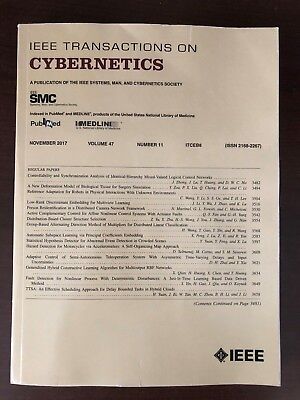边缘感知与控制拓扑设计:一种动态可观测性保证方法
IF 10.5
1区 计算机科学
Q1 AUTOMATION & CONTROL SYSTEMS
引用次数: 0
摘要
多个边缘计算节点(ecn)采集现场传感器信息并协同进行感知和控制是工业网络物理系统(ICPS)中最重要的过程之一。边缘侧传感信息的交换对于作为多个边缘估计器和一个边缘控制器的这些ecn至关重要。然而,有限的传输资源和ecn在传感和控制方面的不同性能要求给边缘网络拓扑的精细设计带来了挑战。针对这一问题,提出了一种新的动态可观测性条件来平衡各种需求设置下的传感控制性能和传输成本。基于对总传输成本与每个ECN有效可观测性之间关系的定量分析,DO给出了具有时空动态的理想网络拓扑标准。然后针对给定的性能需求,提出了一种动态可观测性保证方法,通过触发适当的感知链路来确定网络拓扑结构。这样,被触发的传感链路集可以动态变化以满足DO条件,从理论上保证传感和控制的整体性能。最后,通过热轧层流冷却过程的仿真研究,证明了DOGM的综合优势。本文章由计算机程序翻译,如有差异,请以英文原文为准。
Topology Design for Edge Sensing and Control: A Dynamic Observability Guaranteed Method
It is one of the most essential processes in the industrial cyber-physical system (ICPS) that multiple edge computing nodes (ECNs) collect field sensor information and cooperate for sensing and control. The exchange of sensing information on the edge side is critical for these ECNs that serve as multiple edge estimators and one edge controller. However, the limited transmission resources and the diverse performance demands of ECNs for sensing and control make it challenging to design the edge network topology delicately. For this issue, a novel dynamic observability (DO) condition is proposed to balance sensing-control performance and transmission cost under various demand settings. Based on the quantitative analysis of the relationship between overall transmission cost and each ECN’s effective observability, DO gives the criterion for desirable network topologies with spatio-temporal dynamics. Then for the given performance demands, a dynamic observability guaranteed method (DOGM) is proposed to determine the network topology by triggering proper sensing links. In this way, the set of triggered sensing links may vary in a dynamic manner to satisfy the DO condition, and the overall performance of sensing and control is theoretically guaranteed. Finally, the comprehensive advantages of DOGM are demonstrated by the simulation study in the hot rolling laminar cooling process.
求助全文
通过发布文献求助,成功后即可免费获取论文全文。
去求助
来源期刊

IEEE Transactions on Cybernetics
COMPUTER SCIENCE, ARTIFICIAL INTELLIGENCE-COMPUTER SCIENCE, CYBERNETICS
CiteScore
25.40
自引率
11.00%
发文量
1869
期刊介绍:
The scope of the IEEE Transactions on Cybernetics includes computational approaches to the field of cybernetics. Specifically, the transactions welcomes papers on communication and control across machines or machine, human, and organizations. The scope includes such areas as computational intelligence, computer vision, neural networks, genetic algorithms, machine learning, fuzzy systems, cognitive systems, decision making, and robotics, to the extent that they contribute to the theme of cybernetics or demonstrate an application of cybernetics principles.
 求助内容:
求助内容: 应助结果提醒方式:
应助结果提醒方式:


